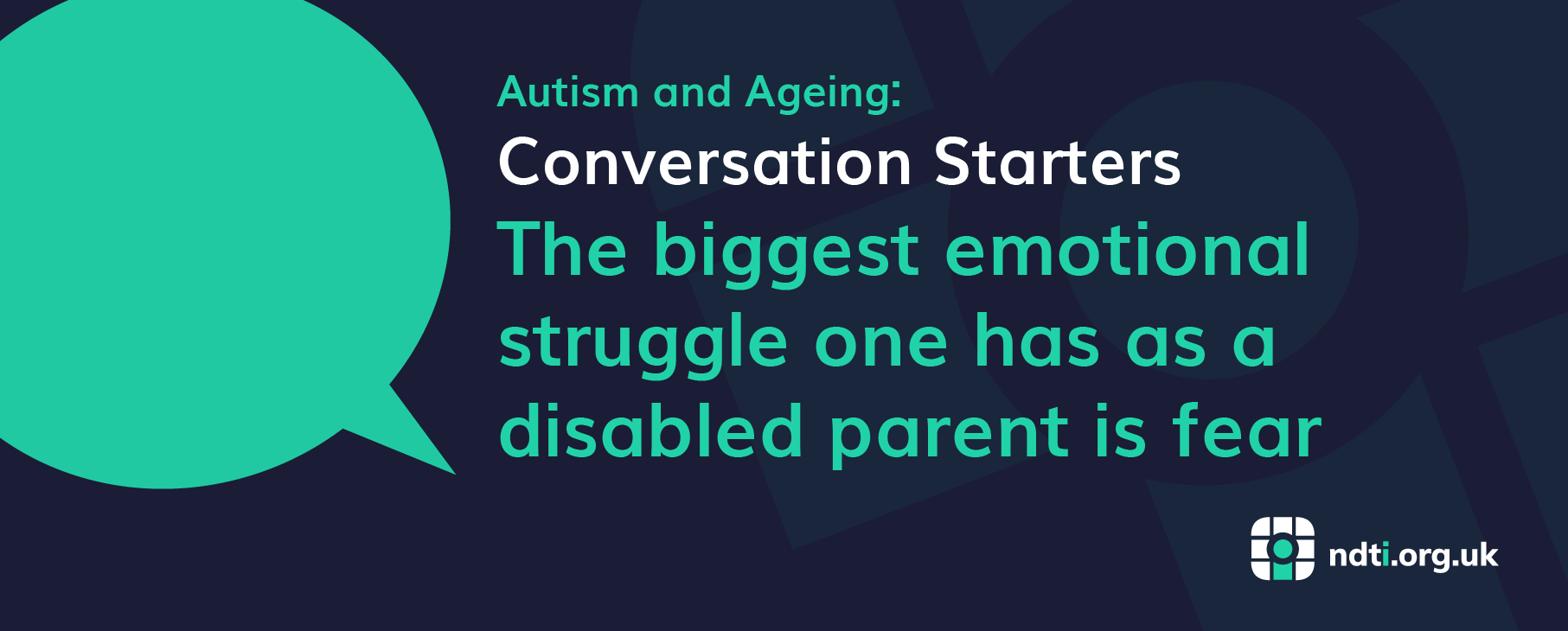The biggest emotional struggle one has as a disabled parent is fear
When an ageing disabled parent has both themselves and their autistic offspring to worry about, fear increases as one ages. Add to this concern the presumption of incompetence compounded by ageism and fear can become a firestorm of anxiety that debilitates an aging autistic parent.

My son is nonspeaking autistic with high support needs, and I don’t want him forced into congregate care after a lifetime of community-based living. The number of catastrophic incidents in congregate care facilities evident during the pandemic make it clear that institutional care continues to fail aging and disabled adults here in the United States. Are there solutions for us that can reduce my parental concern for both my care as I age and my fear of leaving my son alone in this world with no safe space to provide him humane care after his father and I are gone? What if both his father and I reach a point of disability where we need support as well?
My husband and I began looking for radical solutions to our situation. We found some answers from other countries that are working: technology and a wider concept of community care, Matsudo, Japan, and De Hogeweyk, Netherlands.
My husband began automating our home to support our entire family’s needs as our son got older. Aside from standard accessibility features like adaptive bathrooms and nonslip stairs, he made a smart home environment that is safer and simpler to control for all of us. But Japan has taken automation much further. It is using the Internet of Things (IoT) to help care for the health needs of its aging population. Rather than institutionalizing dementia patients, Japan has created smart tags inserted into shoes and bags to help recover clients who might wander frequently. Washable UHF tags in bedsheets alert carers when it is time for cleaning and client incontinence support. Many apps now allow discrete follow-up on patients that prevent severe health crises and allow community living with less need for human interaction. While people do not see things like robot vacuums as assistive technology, smart appliances allow for in-home living with less invasive interactions.
Matsudo, Japan, and De Hogeweyk, in Weesp, Netherlands, are two newer concepts of elder neurodivergent care that should be more prominent in the autism public policy conversation. Matsudo’s care concept is dementia-centric living. The concept includes community-wide “dementia supported training”, (including local businesses educated on supporting clients and their families), and “dementia aware” volunteers regularly taking part in neighborhood patrols to ensure lost villagers are located and safely returned to their homes. The Matsudo city plan also includes support groups and respite activities for carers.
De Hogeweyk is an attempt at humane congregate care by creating a small-town environment where clients can work, socialize, and wander safely. It is made to feel as much like community living as possible. Residents are treated with dignity, encouraged to go on walks, get fresh air, go to the pub or grocery store, and participate in the aspects of daily living they have known their entire lives. The number of medications used when compared to traditional congregate care facilities is shockingly low, the staff turnover is low, and the residents are much healthier than those forced into traditional congregate care facilities. It works in the Netherlands because it is adapted to the country’s health care system, culture, and the active participation of those involved in the care concept.
Both these approaches acknowledge disability and decline without the dehumanization of aging neurodivergent people needing support. When I consider what my son and I need as we age, community-based care and ageing in place should be the gold standard of care.
About the author:
Mrs. Kerima Çevik (she/her), Board Member, HEARD, is a disabled parent activist, blogger, presenter, and writer. Çevik’s work and advocacy centers multiply marginalized people and communities, with an intentional intersectional focus on race, ethnicity, disability, gender, class, and more, as these identities intertwine with and inform disability rights, disability justice, autistic inclusion, communication and language rights, representation, and social justice more broadly. Her independent research and writing shines a light on disparities in quality of life for marginalized intersected disabled populations and their families. Çevik believes and passionately invests in grassroots community-building and pay-it-forward activism models. Çevik is also a firm believer in cross-community, -generation, -language learning and prides herself on being grounded in life-long learning and exchange with Black/Indigenous/disabled youth and people of all ages.